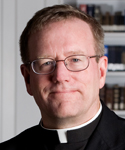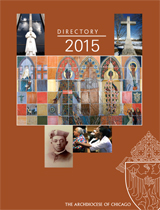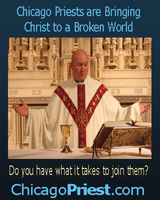September 27, 2009
Vatican’s investigation of women religious in America

Faith
and Culture
In recent weeks, a number of angry voices have been raised to protest the Vatican’s initiative to investigate communities of American nuns. To give just one example, Chicago Sun-Times columnist Carol Marin strongly critiqued the move, arguing that it represents just another example of an out of touch, patriarchal church persecuting those who refuse to cooperate with it.
“These investigations,” Marin argues, “are about dissent in the Catholic church and how to stop it.” And this particular attack, she says, is directed at the very people who, for years, did most of the grunt work of the church, laboring away for slave wages, even as priests lived high on the hog: “While diocesan priests lived in rectories with more rooms than they could use … the sisters lived in tiny cells, did their own scrubbing and potato peeling and provided the church with a dirt-cheap work force.”
Grain of truth
Now there is usually a grain of truth in a caricature, and Marin’s is no exception. There were too many nuns in the pre-conciliar period who were treated with disrespect by priests, and there certainly was a kind of systematic sexism that marked the church, as it marked almost every institution prior to, say, the 1970s.
However, I feel obliged to observe that the sisters in question had taken, of their own free will, vows of poverty so that they could serve Christ and her mission with utter devotion. In this regard, they were identical to thousands of men religious — Dominicans, Jesuits, Carmelites, Benedictines, etc. — who did their fair share of “grunt work” for practically no compensation. To characterize such people, therefore, as a “dirt-cheap workforce” is grossly to misconstrue the nature of their vocation.
But none of this speaks to my principal objection. As I mentioned, Marin interprets the Vatican’s move as basically a display of ecclesiastical power, “an assertion of control,” to use her own words.
Well, there’s control and there’s control. I mean, there is petty interference designed simply to express the domination of the one in power; and there is legitimate tending of the fundamental identity of the institution. I would suggest strongly that the Vatican’s move fits much more neatly under the latter heading. And for evidence, I would draw your attention to a keynote address given by Dominican Sister Laurie Brink to the Leadership Conference of Women Religious in August 2007. The LCWR has been, since the 1950s, the most significant representative body of the leadership of sisters in this country.
In her speech, Brink laid out four models for the future of religious women in America. The first she called “death with dignity and grace.” This is the path pursued by those who see their congregations as simply moribund and are striving to find the best way to bring things to a close. The second model she called “acquiescence to others’ expectations,” by which she means the route taken by a number of newer congregations to follow the promptings of John Paul II and to embrace the habit and more traditional forms of religious life. The fourth paradigm she called “reconciliation for the sake of mission.” Those on this path attempt to bring together the many warring factions within the church — clergy and laity, men and women, liberals and conservatives, etc. — in order to foster the great mission of Jesus. So far, so good — more or less.
Moving beyond church?
But the third model that Brink proposes — what she calls “sojourning” — is much more problematic. This “dynamic option,” she says, “involves moving beyond the church, even beyond Jesus.” No longer ecclesiastical, sojourning sisters have “grown beyond the bounds of institutional religion,” and they search for the Holy in “all of creation” and in the many religions of the world.
Brink quotes an American sister walking this path: “I was rooted in the story of Jesus, and it remains at my core, but I’ve also moved beyond Jesus.” She’s honest enough to admit that those on the sojourning way have “left the religious home of their fathers and mothers,” but she praises them as “courageous women among us” who may “very well be providing a glimpse into the new thing that God is bringing about in our midst.”
Nowhere in her address does she suggest that there is anything substantially wrong with this third model; in fact, she insists that all four models are viable alternatives for religious women in America.
We have a problem
Well, as Tom Hanks in “Apollo 13” said, “Houston, we have a problem.” A Christian can respect and admire other religious figures and founders, but she cannot move “beyond” the one who is the Logos of God and who described himself as the “way, the truth and the life.”
A Catholic Christian can become impatient with the institutional church, even sharply critical of it (as Catherine of Siena was); but he cannot leave the church behind, as though it were an incidental vehicle. The sort of relativization of truth that is essential to Brink’s third model is directly repugnant to the self-understanding of the Catholic Church.
Now, one could certainly argue that the speech I’ve been analyzing represents only one person’s opinion. Perhaps. But I think that’s precisely what the Vatican quite rightly wants to determine.
Barron is the Francis Cardinal George Professor of Faith and Culture at the University of St. Mary of the Lake/Mundelein Seminary. For more of his writings visit www.wordonfire.org.
 Catholic
New World - Newspaper for the Archdiocese of Chicago
Catholic
New World - Newspaper for the Archdiocese of Chicago Archdiocese of Chicago Directory
Archdiocese of Chicago Directory Oficjalne wydawnictwo Archidiecezji Chicago w języku polskim
Oficjalne wydawnictwo Archidiecezji Chicago w języku polskim